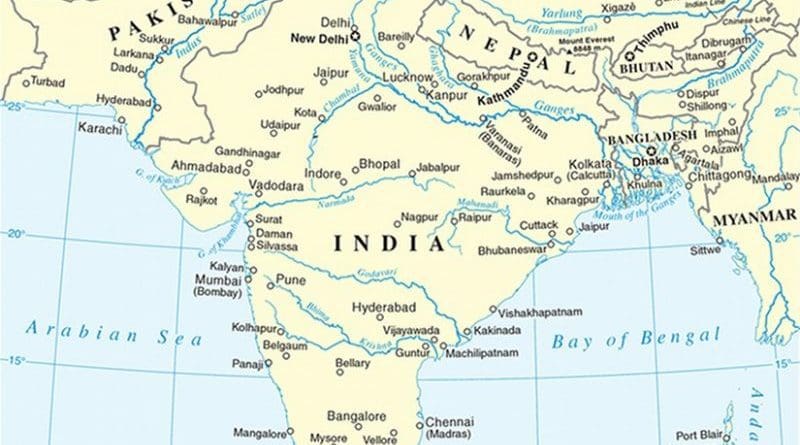Transforming South Asia: A Key To The Future – OpEd
By Dr. SinhaRaja Tammita-Delgoda*
Commonalities are what we have in common. In most parts of South Asia the inheritance is common, shared origins, shared languages, shared religions and shared cultures. Yet in each case this common inheritance has diverged and taken its own unique path. This divergence has occurred at different times, in Sri Lanka it has taken place over millennia, in Bhutan and Nepal over several centuries, in India, Pakistan and Bangladesh it has happened during the 20th century. It is a history of common origins taking different shapes and forms with very different interests.
As South Asians we have a shared inheritance but do we have common interests? Do these common interests coincide with our national interests? Do our national interests converge? Where, when and at what cost? Only once we have achieved it can we seek transformation.
It is through trade, security and shipping that our interests can come together, that commonality and divergence can lead to convergence. In doing so it could provide the key to the future, the Transformation of South Asia.
Sovereignty Is An Important Commonality
We are all sovereign nations. As states, as nations and as peoples, we cannot allow and cannot afford to have our sovereignty compromised. Not only is this a commonality, it is also a convergence, for it underlies the foundation of our societies. As we have seen in Afghanistan, Pakistan and until very recently in Sri Lanka, when sovereignty is undermined, the society begins to implode. The result is an unending cycle of death and destruction.
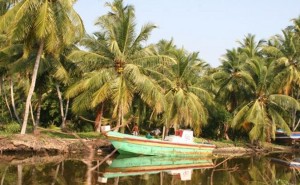
Brown University’s Costs of War project summarizes the pattern of killing in the Afghanistan-Pakistan conflict since 2001. It estimates that from 2001- 2016, 173,000 have died in Afghanistan and Pakistan, while 183,000 have been seriously injured. In Pakistan alone, nearly 1 million people have been displaced, approximately 22,100 Pakistani civilians have been killed and 40,792 were wounded. During this period 8,214 members of the Pakistani Security Forces have lost their lives.
Indian too faces challenges to her unity and security, mostly from within. After nearly three decades the conflict between Naxalite guerillas and the Indian government, still remains ongoing. The Naxalite rebellion encompasses a vast swathe of territory across central India and is now one of the world’s longest running insurgencies. Since 1980 estimates suggest that more than 20,000 people have been killed. North Eastern India too has been home to a long-running separatist insurgency and since 1992 more than 6,000 people are thought to have been killed.
Separatism and terrorism are clearly commonalities, factors which we now realize affect us all. The message is very clear. Sovereignty means stability and security. It lies at the very basis of our society. It is this foundation which gives us the ability to listen, to accommodate and to change. Without this platform there can be no transformation, for it is nobody’s interest.
The dangers of unilateral action are now well established and we have all learned them, individually and together. Our countries and our cultures have so many intersections that we have no choice but to try to work together. How do we live together? The answer is consensus.. The very nature of the word implies that it cannot come from one country, it must come from all of us together, it cannot come from without. A coming together from without cannot and will not last.
In his seminal work U.S. Foreign Policy: Shield of the Republic (1943) American intellectual, writer, journalist and political commentator, Walter Lippmann (1889 –1974), defined national interest as “The ability of a nation to protect its internal values from external threats. A nation has security when it does not have to sacrifice its legitimate national interests.”
As constitutional societies and democracies and we owe it to our people to protect the national interest. A country which does not protect its national interests, no longer represents its people. Thus the path to change, to transformation, has to come from within, from each one of us. Only by expressing our national interests and recognizing the national interests of others can we hope to come to a consensus. Not only does this carry an assumption of equality, it also demands negotiation; negotiation amongst sovereign equals as partners. As Nelson Mandela once said: “Only free men can negotiate; prisoners cannot enter into contracts. Your freedom and mine cannot be separated.”
There is an enormous difference between what we want and what we need. This is the meaning of common interest. Each of us must decide what is good for ourselves. No one else can do it for us. We must decide what we want to achieve, what we want to keep and what we are prepared to give up.
What are the drivers of transformation? India is certainly one of the drivers of change and transformation in South Asia. However, no matter what governments may say, the lessons of the past are hard to forget.
It is now widely acknowledged that that India’s role only served to prolong the bloody 30 year conflict. In Sri Lanka, the part played by India in nurturing and then sustaining the Tamil Tigers remains an enduring memory, one which will take a long time to fade.

Nepal is yet another telling example. Unlike Sri Lanka, Nepal has no route to the sea and it is completely landlocked. It is totally and utterly dependent on its relationship with India. In 1995, 93% of Nepal’s Trade went through India. Since Independence, its relationship with India has been governed by a series of trade and transit treaties. In 1989-1990 this relationship broke down and India closed its borders with Nepal. This stopped Nepal’s foreign trade in its tracks. Crucial shipments of oil were halted, agricultural production declined dramatically and there were sweeping job losses in factories. The price of basic commodities trebled, intensifying economic hardship in the countryside and the towns; this united peasants and professional classes in opposition, bringing down the government of the day.
The recent histories of Nepal and Sri Lanka provide a telling message. It is one which is underlined by the words of Danish philosopher and theologian Soren Kierkegaard (1813 –1855). “Life must be lived forwards but it can only be understood backwards.”
This is a lesson which we in South Asia have had to learn, both individually and together. We cannot afford to relearn these lessons. As neighbors we cannot relocate and so we have to live together. Until we have understood and imbibed the lessons of our past, nothing will change very much. We may not be able to live together, let alone go forwards.
There is also another factor to be considered. The statistics for aid and trade make it very clear that there is now another player in South Asia, another contributor. This is China. In the last decade China’s trade with South Asia has grown at a tremendous pace. Today China has a strong economic presence in almost every South Asian country and has proved itself as important an ally as India. China is now the largest trading partner for both Pakistan and Bangladesh. For Sri Lanka, China is now her largest source of FDI, one of her leading commercial lenders and her biggest source of tourists.
China and India are the two emerging giants of the 21st century. According to Goldman Sachs, by 2050 India could be the world’s largest economy and China the second largest. The evidence is all too clear. Both India and China are crucial stakeholders in South Asia, vital players in our economic growth, our security and our stability. For all our commonalities, can we hope to transform South Asia without China? Perhaps the question which we should be asking is where the interests of these two emerging power houses will converge. Where they will meet? It is here, in this intersection perhaps, that we, the other nations of South Asia will benefit.
South Asia has looked inwards, landwards far too long. It is here that most our problems lie. When we look inwards all we see is friction and conflict. There are issues and tensions everywhere; between Pakistan and India over Kashmir, between India and Bangladesh over river waters, between Nepal and India and between Sri Lanka, India and Tamil Nadu.
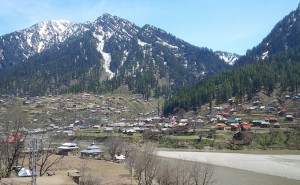
The most important dispute of all is that between Pakistan and India. It is Kashmir. As English parliamentarian and Labour Party member Ian Macshane remarked, “not mentioning Kashmir is a sensible as not mentioning Gaza when discussing the Middle East.” (2010) This is an issue which is not going to go away. Both sides regard it as a vital national interest and rightly so. It cannot be resolved by us or any other outsiders, only by the two of them.
Similarly, there are a number of tensions between India and Bangladesh. The most important issue is water, the source of life. Nearly every river which flows through Bangladesh originates in India. Therefore every action that India takes in this sphere has massive repercussions for Bangladesh. For many years the Farakka Barrage across the Ganges River was a bitter source of contention.A breakdown in the agreement to share the river’s waters finally caused Bangladesh to lodge a formal protest against India at the United Nations General Assembly. Similarly, the sharing of the waters of the Teesta, the country’s fourth largest river, remains a burning issue. Although it originates in Sikkim and flowing through West Bengal, the Teesta is vital to Bangladesh, which seeks 50 percent of its waters. Negotiations have been going on since 1983; there is still no sign of resolution of this vital issue.
On the Indian subcontinent, all we see are barriers and human walls, contested territories, contested identities, clashes and conflicts of interest. When we look inwards, wherever we look, north, west, east and south, an endless vista of disputes and simmering tensions appears. Some can be resolved, some will remain intractable. This is unlikely to change because in each and every case our national interests cannot and must not be compromised.
The sea however, could be a liberating factor. On land we cannot compromise, because it is where our people live and lived for centuries. We cannot tear down the human walls which we ourselves have built. On land there is a limit to our power, a limit to what we can do and where we can go. The sea however, could be different.
The ocean opens up a sense of space and freedom which the land cannot provide. Maps reveal a vast, open space, full of horizons which are still to be charted, a place where we can make our futures happen. The sea is a lifeline. Oceans have traditionally been the highways of trade and nearly 90 per cent of the world’s trade still travels by sea. Both China and India are more reliant on it than ever before in their history. The more China and India integrate with the world economy, the more they will need the sea.
China and India have rapidly modernizing industries and burgeoning middle classes with rising incomes and purchasing power. To sustain growth and meet demand they will have to search for markets and resources far beyond their borders. The sea will be their route, the factor which determines the well-being of more than two and a half billion people. Not only will it feed their hunger for raw materials, it will carry their exports further and further afield, leaving them room to grow and grow.
All the statistics tell us that it is in the Indian Ocean, that the future of South Asia lies. It is a picture of trade and shipping, of growing patterns and changing dynamics. 50% of the World’s container traffic travels across the Indian Ocean, so does 70% of the world’s crude and oil products. This ocean is also the waterway for the mineral and energy resources of Africa, essential ingredients for the booming economies of India and China. It is here in the Indian Ocean that the economies and the interests of the two giants of Asia, China and India will intersect. If this turns out to be the case, it will be in the Indian Ocean that all our interests will converge. Divergent interests, all coming together at the same place.
Scholars talk of the immense riches of the sea. Its greatest resource however, is shipping, literally the transportation of goods from one place to another. This is the lifeblood of the international economy. Unlike so many other resources, it is a man made commodity; as such it has the capacity to grow and grow.
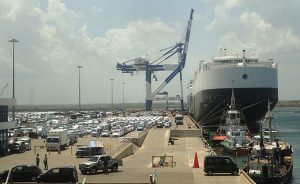
In 2006 none of the largest container lines like Maersk, Hanjin, Evergreen and Meditteranean Shipping Company (MSC) could use South Asia. The subcontinent simply lacked the ports with the capacity to accommodate these vessels and the business they brought. Since then the whole picture has changed. All over South Asia deep sea water ports have come into being. In 2016 the port of Colombo was ranked the 23rd best port in the world.
Other container ports with deeper draughts have also come into being. In Southern India, the much-talked Vallarpadam Container Terminal in Kerala was commissioned at the end of 2010. In Andhra Pradesh, Krishnapatnam Port has emerged as a world-class port. In 2011 Gangavaram, also in Andhra Pradesh, made headlines by handling the largest fully laden coal vessel to call at any Indian port. The most ambitious undertaking of all is the proposed Vizhinjam Deepwater Seaport in Kerala, which aims to eclipse both Colombo and Hambantota as South Asia’s largest deepwater, multi-purpose shipping hub.
Not only India, but South Asia as a whole could benefit.
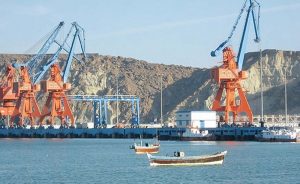
Pakistan’s deep sea water port at Gwadar in Baluchistan stands at the entrance to the Straits of Hormuz, astride the oil routes from the Middle East. Although the security situation in Baluchistan continues to pose problems, Gwadar is designed to cater for the external trade of the landlocked Central Asian Republics(CAR)- Kazakhstan, Kyrgyzstan, Tajikistan, Turkmenistan and Uzbekistan. It is also ideally situated to become the transshipment hub for Afghanistan and Western China. Part of China’s needs in oil and gas can also be brought to Gwadar, from where it can moved by pipelines to Xinjiang. It is in this context that the development of roads, railways and infrastructure become essential. When the network connecting Gwadar to the hinterland becomes fully functional, the whole region will begin to thrive.
The sea is an advantage which Bangladesh is also determined to capitalize on. The country is strategically placed near India, China, Myanmar, Bhutan and Nepal. All of these nations either are or are in the process of becoming exporters of various consumer goods. One of world’s fastest growing economies, Bangladesh has been listed by Goldman Sachs’s as one of the “Next 11”emerging economic powerhouses of the 21st century. However, the country’s existing seaports, Chittagong and Mongla, are both are too shallow for large container ships. They are also affected by silting and require major dredging.
Bangladesh badly needs a deep sea port. This would transform the country into a regional hub, making it the major gateway to the Bay of Bengal. It is expected that the multilateral trade and investment generated will add between two to three percent to the country’s economy. If the new port is developed as a transhipment hub like Colombo or Singapore, it would galvanize the economy not only of Bangladesh but of the whole north east. This would also provide landlocked Nepal and Bhutan with global outlets for their markets. Opening up the whole North East for multinational use, this could change the whole dynamics of the north east, bringing about a massive transformation. It would also transform Bangladesh’s relationship with India.
However, despite the urgency of her need, Bangladesh has yet to realize her potential. Although China had offered to build a deep sea water port, pressure from India, Japan and the United States has so far delayed development of any kind. In the case of Bangladesh, geopolitics has so far prevailed over the national interest, hindering national development.
Sri Lanka is at an advantage because it is surrounded by the sea. It means that we have the means to chart our own destiny, in any direction that we choose. Located at the heart of the Indian Ocean, Sri Lanka lies astride the world’s busiest shipping lane, that connecting East and West. The country is also on the circum-equatorial route, the shortest route to circumnavigate the world. Accessing a market with minimum deviation is of key importance as it saves time and energy. In maritime trade this represents a massive saving. Hambantota lies within 10 nautical miles of this route.
It is at sea, in this new emerging space, that all South Asia’s interests can converge. Trade and shipping are clearly interests which are common to all. They form a commonality which we can use and explore in different ways, the keys to a common future.
As an idea it may be a little vague, full of holes. But an idea is a good blue print for action. It may be somewhat abstract, a little rather indistinct. But then so is the future. In this context, the words of Gautama Buddha seems just as relevant today as they were thousands of years ago.
The Collection of Middle Length Sayings
What is past is got rid of and the future has not come
But whoever has vision
Now here, now there of a present thing
Knowing that it is immovable, unshakeable,
Let him cultivate it.
The sea offers Sri Lanka a vision of its future, something which is present and very real. It is a vision which she must begin to understand and must seek to grasp. It is her key to the future.
*Dr. SinhaRaja Tammita-Delgoda is a historian, art historian and academic, who is well known as an authority on the art and culture of Sri Lanka. He has also lectured on Insurgency, Guerilla War and Terrorism in India, England and Sri Lanka, is widely published and has been featured in the national and international media He has currently specializes in South Asia and the Indian Ocean.
This article has been edited, updated and is a revised version of speech at the Asian Relations Conference on Transforming South Asia (India, 2012). The original version was as “Transforming South Asia: Imperatives for Action” (New Delhi, 2013) and also in The Sunday Island (Sri Lanka) August 26, 2017.

